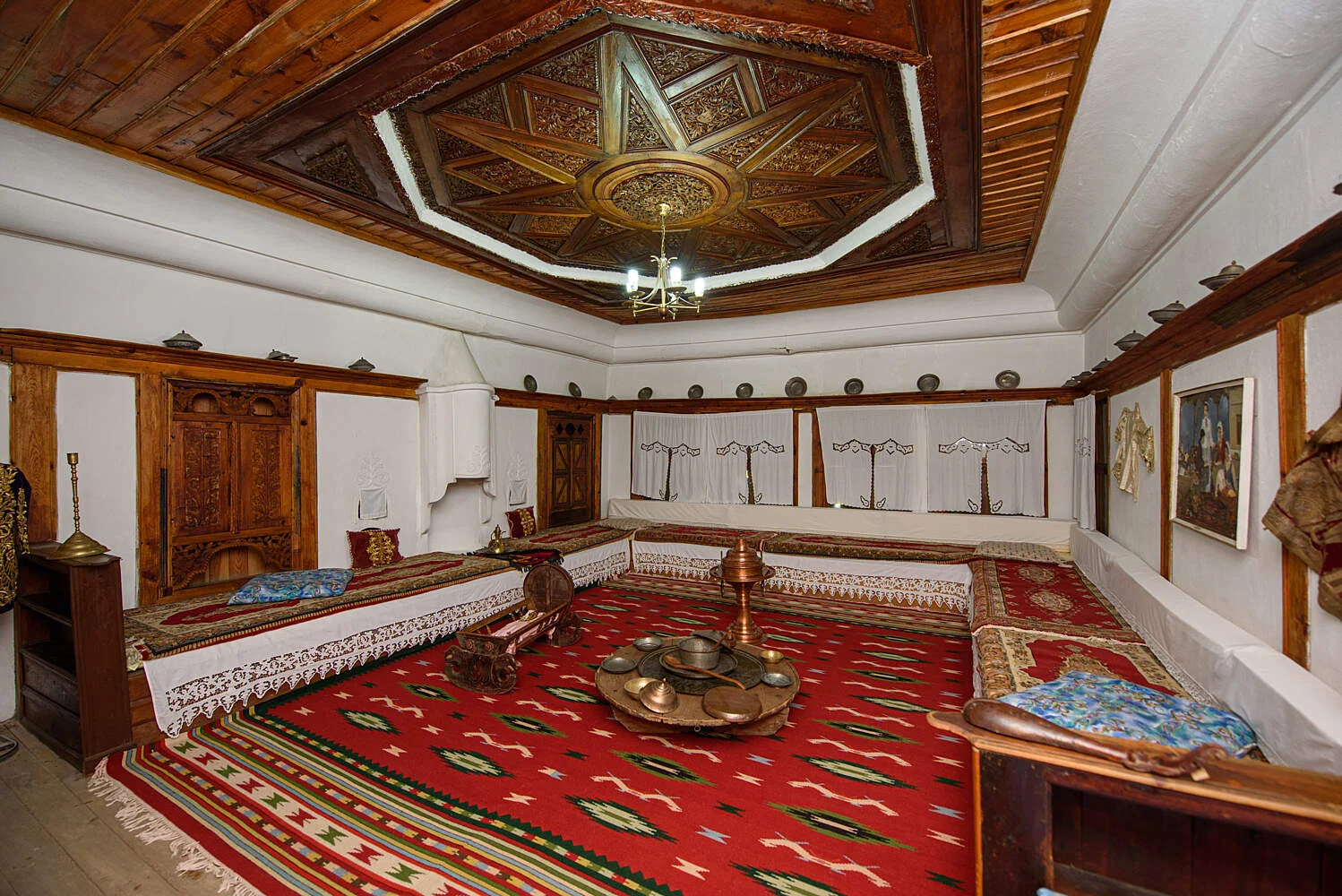Key Takeaways
- The Ethnographic Museum of Elbasan offers a deep insight into Albanian traditions, customs, and daily life].
- Located in central Albania, Elbasan has played a vital role as a crossroads of cultures and history.
- The museum’s architecture reflects traditional Albanian and Ottoman influences, adding to its historical charm.
- Its collections include traditional costumes, tools, household items, and artifacts that narrate the story of Elbasan’s rich cultural tapestry.
- Education programs and cultural events at the museum promote the preservation of Albanian heritage and customs.
Table of contents
- Introduction: Discover the Ethnographic Museum of Elbasan
- History and Background of the Ethnographic Museum of Elbasan
- Architecture and Setting: Explore Albanian Architecture
- Collections and Exhibits: Dive Into Rich Traditional Collections
- Cultural and Educational Importance: Understanding Albanian Traditions
- Visiting Information: Plan Your Visit to the Ethnographic Museum of Elbasan
- Conclusion: Embrace the Cultural Journey to Elbasan
Introduction: Discover the Ethnographic Museum of Elbasan
The Ethnographic Museum of Elbasan is a vital cultural and historical site in [Albania](https://albaniaturism.com/ethnographic-museum-gjirokaster-dive-albanian-heritage/). As a prominent repository of Albanian cultural and historical artifacts, this museum offers *deep insights* into the region’s traditions, customs, and way of life. Visitors can anticipate a tangible connection to Albania’s past and its enduring cultural heritage.
Elbasan is geographically positioned in central Albania, making it a *historically significant crossroads*. Its central location has not only served as an economic hub but has also allowed it to absorb diverse cultural influences, all of which are vividly represented in its cultural heritage. Understanding its geographic context is crucial to experiencing what the Ethnographic Museum of Elbasan has to offer.
The museum stands as a dedicated institution that plays a *critical role* in preserving and presenting the material culture and social practices specific to the Elbasan region, elevating their significance within the broader framework of Albanian identity.
History and Background of the Ethnographic Museum of Elbasan
The origins of the Ethnographic Museum of Elbasan are rooted in the city’s dedication to preserving its rich cultural tapestry. While specific details about its founding date and key figures may vary, various sources highlight its importance in safeguarding local traditions.
Its primary mission is to document and preserve the material culture of Elbasan, aligning with the goals of ethnographic museums worldwide, which aim to collect artifacts that represent everyday life and interpret the cultural practices behind them. Such institutions promote cultural understanding and heritage preservation.
In Albania’s broader historical context, this museum exemplifies efforts to maintain national identity by recording social structures, folk traditions, and customs, contributing to the national narrative and emphasizing cultural continuity.
Architecture and Setting: Explore Albanian Architecture
The architecture of the Ethnographic Museum of Elbasan reflects traditional Albanian and Ottoman influences, creating a *historic and aesthetic* atmosphere. The building may be a classic Elbasan house or an architecturally significant structure, each with its story.
Materials such as wood, stone, and brick feature prominently, showcasing traditional building techniques and local resources. Discovering whether the structure has undergone renovations can offer insights into its historical evolution ).
The surroundings also add value, whether set within Elbasan’s historic center, near the castle, or amidst a contemporary urban landscape. The environment enhances the visitor’s experience, connecting architecture to cultural history. Understanding this setting completes the picture of how the museum functions as a *cultural landmark*.
Collections and Exhibits: Dive Into Rich Traditional Collections
The museum’s collections offer an *expansive view* of life in Elbasan and Albania. Visitors will find traditional costumes, tools, household items, and artifacts that showcase the region’s rich ethnographic tapestry.
Traditional costumes reveal regional variations and social significance, offering a glimpse into societal hierarchy and cultural identity. Tools related to agriculture, crafts such as weaving and blacksmithing, and domestic items depict daily life and local ingenuity.
Artifacts like religious objects, musical instruments, and personal heirlooms further tell stories of local customs and historical influences, such as Ottoman legacies. These exhibits form a vivid narrative about Elbasan’s cultural development over centuries.
By exploring these objects, visitors understand how material culture supports social and cultural practices, bridging past and present. For more on Albanian traditions, visit.
Cultural and Educational Importance: Understanding Albanian Traditions
The museum plays a pivotal role in educating the public about Albanian customs, traditions, and rural life. Its guided tours and educational programs make Albania’s cultural heritage accessible and engaging .
Workshops, storytelling sessions, and craft demonstrations are common, helping preserve intangible cultural heritage such as music, dance, and culinary traditions. These initiatives ensure that vibrant cultural practices are passed down to future generations.
The museum’s efforts strengthen community bonds and promote cultural identity, fostering appreciation for Albania’s diverse traditions. Engaging with these programs allows visitors to experience the *living culture* firsthand.
Visiting Information: Plan Your Visit to the Ethnographic Museum of Elbasan
The museum is conveniently located in the heart of Elbasan. Before visiting, check the current opening hours and admission fees directly through their official channels to ensure a smooth experience.
Admission is generally affordable, with discounts often available for students, seniors, and groups. Visitors should also inquire about guidelines regarding photography, dress code, or other visitor protocols.
To maximize your visit, consider visiting during off-peak hours to enjoy a more intimate experience. Nearby attractions include the Elbasan Castle and the old bazaar, providing additional cultural exploration.
Allow sufficient time—several hours if possible—to engage thoroughly with the exhibits and participate in a guided tour. For the latest info, consult the museum’s website or contact them directly.
Conclusion: Embrace the Cultural Journey to Elbasan
The Ethnographic Museum of Elbasan encapsulates the rich cultural heritage of Albania, serving as a *gateway* for visitors wishing to understand the country’s diverse traditions and history. From its engaging collections to its educational programs, it offers an enriching experience for all.
Traveling to Elbasan means immersing yourself in authentic Albanian ethnography, uncovering stories and customs that have shaped the region’s identity over centuries. As you explore the exhibits, you’ll connect with the *living heritage* that continues to thrive in this vibrant city.
The museum extends a warm invitation to *discover and preserve* Albania’s cultural legacy. Planning a visit, engaging with its collections, and participating in activities support heritage preservation while enriching your understanding of this fascinating country. For detailed visiting info, reach out to the museum directly and prepare for a memorable cultural journey.


0 Comment